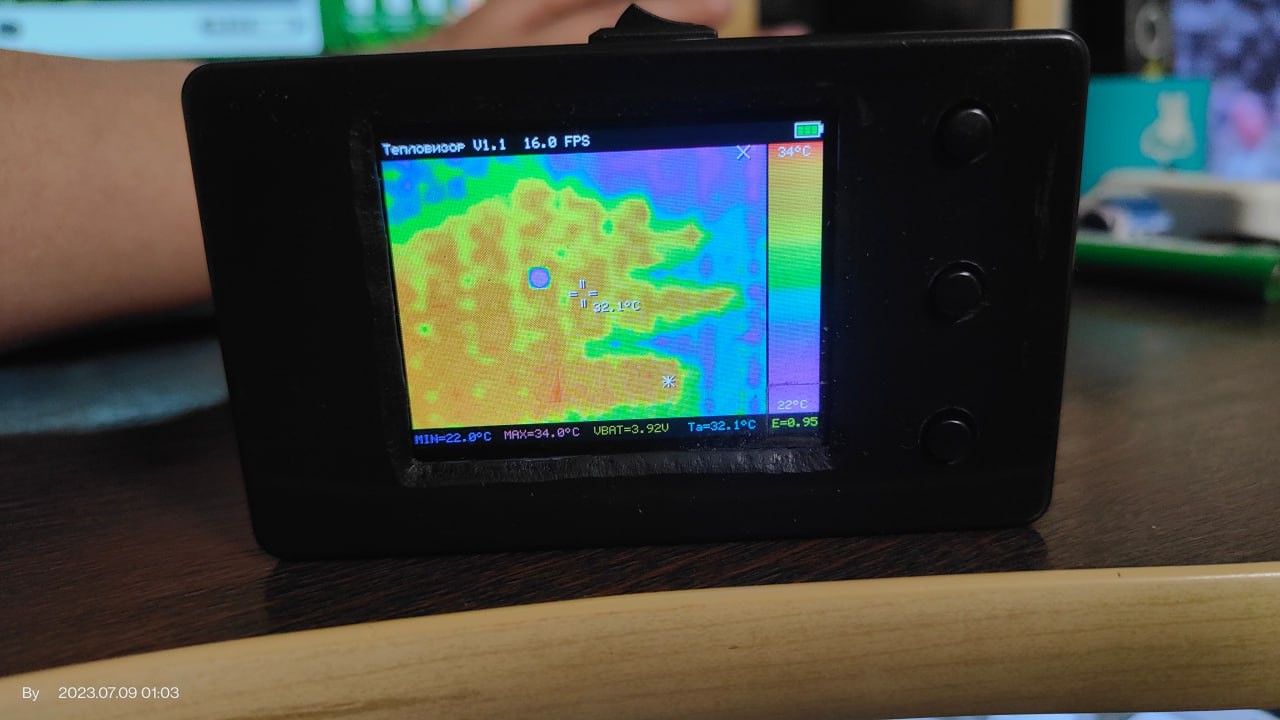I don't have this problem in my thermal imager. But one of my subscribers has this problem.
It looks like this:

What to do if you have a problem with a dead pixel in the sensor?
Fortunately, Melexis has provided a special function MLX90640_BadPixelsCorrection for this case. A description of the functions of the library can be found here: https://github.com/melexis/mlx90640-library/blob/master/MLX90640%20driver.pdf
In the last commit of my project on github, I have already made the necessary changes.
I added a call to the temperature array correction function after calculating the thermogram temperatures:
MLX90640_BadPixelsCorrection(badPixels, pMlxData->ThermoImage, 1, ¶ms);
I added a dead pixel array declaration:
static uint16_t badPixels[] =
{
// 10, // Bad pixel number 1
// 201, // Bad pixel number 2
// 339, // Bad pixel number 3
0xFFFF
};
The value 0xFFFF means the end of the array. As you can see, by default the array is empty. You can add 1 or several numbers of dead pixels to the array (from 0 to 767), after which the measured temperatures of these pixels will be ignored, and the averaged values of 2 neighboring not broken pixels will be used as the temperature.
 Ruslan
Ruslan
Discussions
Become a Hackaday.io Member
Create an account to leave a comment. Already have an account? Log In.